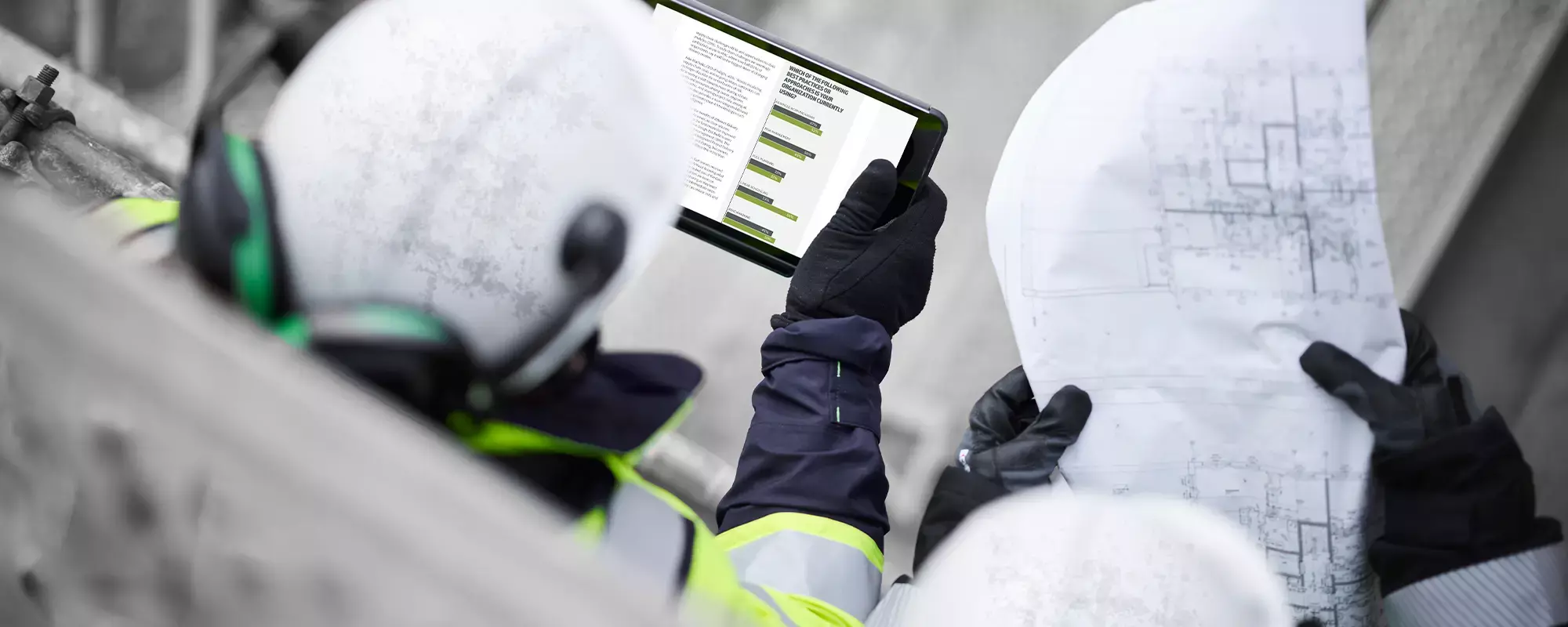Over the past decade or so, much has been said regarding “digitalizing” or “revolutionizing” the industry with new construction technology. Let’s put tablets in everyone’s hands. Let’s get laser scanners on everyone’s backs. Let’s fly drones around each of our project sites. So much so that it can seem to be more about adding technology purely for technology’s sake than for real-life benefits. But when it comes to practical, game-changing technological innovations, there is a middle step that can trip you up if you try to fast-track over it.
Think about the evolution of technology in other areas of your daily life. For example, before there were cars that drove themselves, there was the combining of a digital map, a dashboard and global positioning signal. Before there were computers in your pocket, there was the combining of a number pad, a small screen and a mobile signal.
And that’s it right there. That mid-section is the crucial step where silos between processes and departments (and software, when you think about it) are broken down. Yet so many want to go straight to automating project controls instead. The truth? Innovation, in any industry, doesn’t work quite that way.
There Is No “Easy” Button
Let’s be honest. There is plenty of cool new construction technology running (or flying) around jobsites these days doing impressive things. But the misconception that is growing around the industry is that these new technology innovations can do much of the work for you. This concept of an “easy button,” so to speak, remains a myth in the industry. And while the endgame for construction technology remains finding ways to remove human error and streamline efficiencies through automation, there are still many things that it cannot do.
Lack of Context. For starters, disconnected technology lacks context. One of the questions we hear most often is, “Do you have a system that will scan the drawings, develop a takeoff and price it against our cost database automatically?” While you can teach a system to auto-count a certain symbol or line as a wall made of studs, gypsum board and paint to apply a cost, how will it know if there is a supply shortage on that paint color, or the intricacies of door and window placement in the wall? Painting takes more time the more cutouts you must work around.
What if we bring the context of “when” into the equation? Referencing the schedule requires stepping out to a different system to understand the significance of sequencing. Are you painting that wall in the winter before the HVAC system is complete? Disconnected construction technology would not have visibility to the need of renting a portable heater from your cost database.
Lack of a Common Experience. Which leads to the other key deficiency in disparate software, the general lack of experience across processes on the jobsite. There is likely decades worth of experience walking around your offices every day, and that is factored into decisions on your projects. Back to scheduling, the sequencing in which one would install multiple pipe traces on a single rack might seem logical to a computer viewing a diagram; just work from one side of the rack to the other. But what if the storm water line is required to be commissioned before you can move forward with enclosing the building? A simple rack of only five pipe systems could have 120 different installation sequences. How would a machine know which is most effective for the project you are scheduling?
The good news? It’s not all doom and gloom. There are several ways construction technology innovation is moving forward in real time.
What Construction Technology Can Do for Your Business
If we take that step back, allowing construction technology to focus first on combining processes and departments, we begin to organize, normalize and democratize datasets that have long been hidden. By doing so, we unlock the potential to capitalize on the theory of “big data” within the construction industry.
Historical Benchmarking. While we can all agree that there is a necessary level of skill (context and experience) required to successfully build projects, there are many ways that connected technology can begin to educate employees. Utilizing historical benchmarks, data mining and augmented intelligence, users can build the first pass of a project estimate or schedule with validated production or cost rates. No longer are you reliant on the rates that are “in so-and-so’s head,” but rather the knowledge transfer from your experienced teams to new hires becomes engrained in the process, instead of learned over decades. From there you have a baseline of scope, cost and schedule to iterate on.
Real-Time Connectivity. Additionally, predefined templates and assemblies remove the guesswork out of starting a process from scratch while automated workflows and notifications route data through near constant connectivity, keeping information at the fingertips of the user. By monitoring certain metrics or key performance indicators with this real-time analysis and availability, warning signs alert teams to issues before they arise. With direct access to this single source of truth, robust mitigation strategies connect the impacts of a decision to all affected parties for immediate collaboration on a path forward.
Continuous Improvement. And finally, the more times you work through a project, the smarter the process becomes. Learning as you accept or reject suggestions, growing as you collect and normalize additional data and broadening as you expand your project experience, the connected technology grows with your business.
The Construction Technology Advantage
This is the innovation of construction technology in the present day; breaking down silos, connecting end users and creating a single point of knowledge and data to educate, validate and alert employees along the road of building a project. Remember, you need a GPS before the car will drive itself, and construction technology is no different. By digitally connecting the dots between departments and processes, today’s construction technology will set you up on a path toward the next level of industry innovation and prepare you for an automated future.
Who knows? Maybe next year is the year we see an estimate build itself from a few drawings? But if your scheduling, estimating and project controls systems are split across multiple silos, will it work for you? This is a question that, if acted on in this step of the innovation process, can start you off on the road to real change that yields better project certainty.
Ready to take a deeper dive? InEight can help get your projects where they need to go and help you create a solution that matches your needs while leveraging your teams’ existing strengths. Let us show you how.





